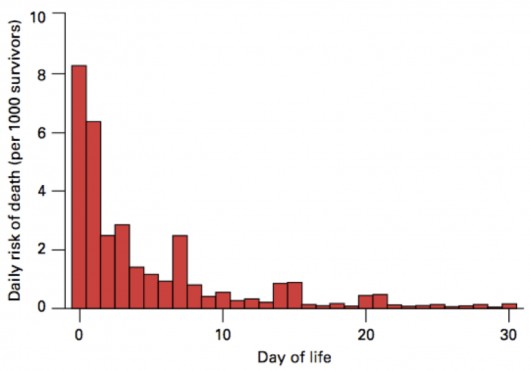What is the most dangerous day in a person’s entire life? Perhaps the one when a teenager receives his or her driver’s license, the first big college party event, rock climbing or back woods vacation? Worldwide data actually demonstrate that the highest risk of death – life’s most dangerous day – is the first 24 hours after birth. Why is this so? Newborns are particularly vulnerable. The transition from mother’s protective environment to the outside world involves drastic changes. One of the most extreme is the necessity to immediately begin breathing air for the very first time. Failure of babies to successfully clear the natural fluid from their lungs and fill them with oxygen within one minute of birth will likely mean death, and for this reason some one million babies die each year.
The bright side of this situation is that assisting babies with simply, immediate resuscitation is usually lifesaving. Stimulating a baby, keeping he or she warm and dry, and providing ventilation when necessary is often all that is needed to guide a newborn through the critical transition to life outside mother’s womb. Through my personal experience providing maternal-newborn care in Angola I’ve witnessed first hand how quickly babies in respiratory distress improve with such care, and how rapidly and enthusiastically health care personnel can acquire these basic newborn resuscitation skills.
Helping Babies Breathe (HBB) is an evidence-based program to teach basic newborn resuscitation techniques to healthcare leaders who can in turn teach them to birth attendants and midwives in the world’s resource-restricted communities. HBB has a companion course, Essential Care for Every Baby and Small Babies, that provides additional important newborn health skill, INMED provides Helping Babies Breathe and Essential Care for Every Baby and Small Babies at least twice each year, and next in Kansas City on June 7-8, 2023. Equip yourself to help one million babies each year survive life’s most dangerous day.

